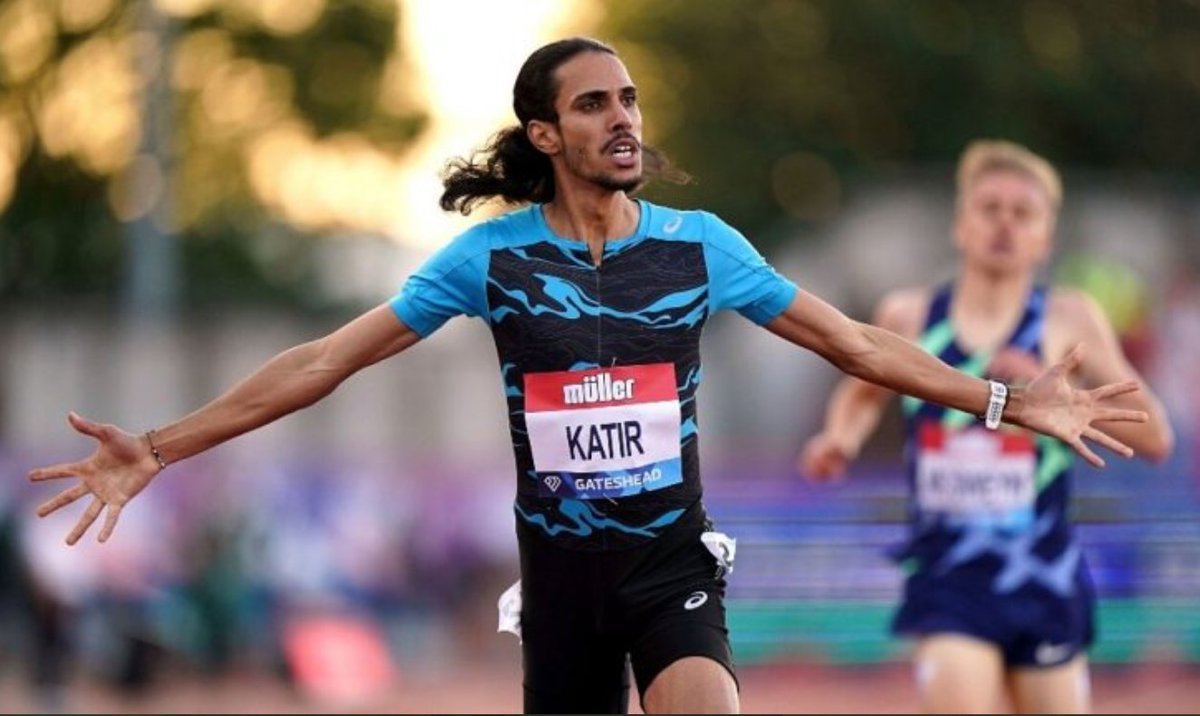
Have we ever seen an #athletics distance trifecta like this before?
Mohamed #Katir broke #Spanish 🇪🇸 records for 1500, 3000 & 5000 in 33 days.
Where does Katir’s achievement sit in history?
@WorldAthletics @atletismoRFEA @AthleticsWeekly @RunBlogRun @runnerstribe
Mohamed #Katir broke #Spanish 🇪🇸 records for 1500, 3000 & 5000 in 33 days.
Where does Katir’s achievement sit in history?
@WorldAthletics @atletismoRFEA @AthleticsWeekly @RunBlogRun @runnerstribe

To run under these times for these distances puts you in elite company in athletics history:
1500m 3:30
3000m 7:30
5000m 13:00
In fact only 7 runners have achieved this in their careers, with #Katir now becoming the 8th.
1500m 3:30
3000m 7:30
5000m 13:00
In fact only 7 runners have achieved this in their careers, with #Katir now becoming the 8th.
A list of the athletes that have achieved this #distancetrifecta
Said Aouita was the first to go past these three milestones in 1989.
Ingebrigsten became the youngest when he ran under 13 minutes in June.
Said Aouita was the first to go past these three milestones in 1989.
Ingebrigsten became the youngest when he ran under 13 minutes in June.

Table of their best times achieved during their careers.
Daniel Komen has the best combined time, 10 seconds ahead of El Guerrouj.
Ingebrigsten and Katir have plenty of years to improve their performances.
Daniel Komen has the best combined time, 10 seconds ahead of El Guerrouj.
Ingebrigsten and Katir have plenty of years to improve their performances.

#Katir's achievement is to achieve these times within 33 days. Ingebrigsten ran 2 in 2020 and the 5000m in 2021. How long they will extend this ability is open to question.
Lagat was 25 when he ran his first sub-3:30, and 38 when we ran his last sub-13:00 - extraordinary.
Lagat was 25 when he ran his first sub-3:30, and 38 when we ran his last sub-13:00 - extraordinary.

As in any sport, runners can hit a rich vein of form & take advantage of this to set PBs across a range of distances.
#Katir's feat is to achieve the #distancetrifecta as a 'debutant' to these times.
Komen, 2 years after his first sub-13:00, manage to achieve it within 28 days.
#Katir's feat is to achieve the #distancetrifecta as a 'debutant' to these times.
Komen, 2 years after his first sub-13:00, manage to achieve it within 28 days.
Komen's extraordinary run in 1997 is worth revisiting.
After a sub-7:30 in the 2-mile WR race, he won the 5000m World Championship, ran a sub-13:00 behind a Gabrselassie WR & then his first sub-3:30 - a #distancetrifecta in 28 days!
Then a 5000m WR of his own 6 days later!
After a sub-7:30 in the 2-mile WR race, he won the 5000m World Championship, ran a sub-13:00 behind a Gabrselassie WR & then his first sub-3:30 - a #distancetrifecta in 28 days!
Then a 5000m WR of his own 6 days later!

Mohamed Katir's 3-race compilation in 33 days is exceptional. He joins an elite group who have achieved the #distancetrifecta.
His test now is to convert these peak performances in the paced-race environment, into results in the competitive environment of the Olympics.
-ends-
His test now is to convert these peak performances in the paced-race environment, into results in the competitive environment of the Olympics.
-ends-
@threadreaderapp unroll please
• • •
Missing some Tweet in this thread? You can try to
force a refresh




